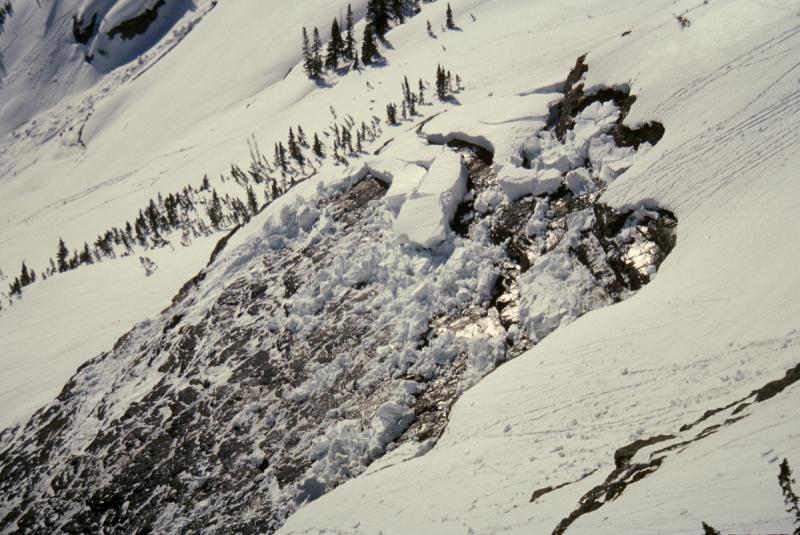
This seems like a good time for a primer on glide avalanches since there was a skier buried to his neck and injured his leg in an avalanche that appears to have been a natural glide avalanche that released high on the slope above the party. We will investigate the slide today and let you know the final verdict.
Glide avalanches occur when the entire snowpack"glides" slowly down the slope--similar to a glacier--until it releases catastrophically at seemingly random times. See the animation below created by Jim Conway for the Utah Avalanche Center.
The snowpackslowly glides down the slope because melt water lubricates the layer between the snowpack and the ground, similar to snow slowly slides off your windshield when new snow gets soggy for the first time. We most often notice glide in relatively homogenous, deep snowpacks after a period of warm weather. You can notice the "glide cracks" forming in the snow like an ever-expanding crevasse.
Glide avalanches occur when the snowpack catastrophically releases. They occur at more-or-less random times but we notice a slight increase in glide avalanches during warm weather when meltwaterpercolates rapidly through the snow, but here is the counterintuitive part, we also notice glide avalanches occurring more during the coldest part of the night or after a cold front arrives.
Researchers have theorized that cold creates a brittle slab on the surface and when the slab fractures, it provides enough shock to trigger the entire moving mass of snow. Note: glide avalanches mostly occur randomly but there is only a slight increase in releases just after the very warm and very cold parts of the day.
Glide avalanches are relatively rare in Utah but we commonly see them in the same places, year after year, namely on the steep rock slabs in places such as Stairs Gulch and Broad's Fork and occasionally in Mill B South and Cardiff Fork.

I took this photo the day after two doctors were killed in a large, glide avalanche on April 28th, 2001 in Stairs Gulch as they ascended by headlamp in the early morning hours. This is not the culprit avalanche, but it was just several hundred yards away in Broad's Fork on a slope of similar aspect and elevation, and also near where yesterday's avalanche probably occurred. In the 2001 double fatality, there was strong melting during the day and the glide avalanche released in the early morning hours--the coldest part of the day.
Like I say, glide avalanches are tricky. Statistically, they cause very few accidents because they are difficult for people to trigger. Accidents from glide avalanches occur when people just happen to be in the wrong place at the wrong time. This is only the second avalanche incident involving a glide avalanche in Utah, as far as I know.






